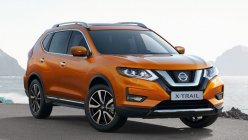Introduced to the Philippine market back in 2019, the Hyundai Kona is one of the more recognizable crossover models in the market today. It’s got that futuristic, cyberpunk-ish look that’ll turn heads, it makes a decent amount of power for its weight, and it’s well-equipped to boot.
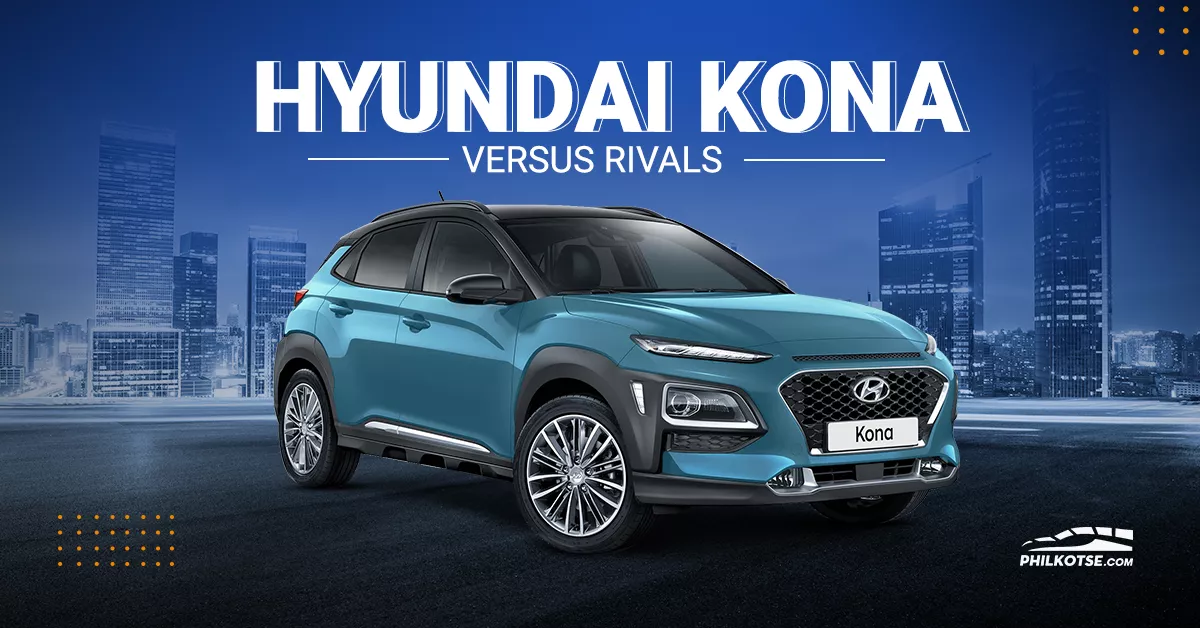
The Hyundai Kona
By having all of those qualities, the Kona has become a common sight on Philippine roads. But for the benefit of the prospective subcompact crossover buyer, however, let us compare the Hyundai-made model against its rivals within the market segment, namely the Ford EcoSport, the Kia Seltos, and Geely Coolray.
Hyundai Kona: Summary of specs
Like its rivals, the Hyundai Kona is a five-seater, front-engine, front-wheel-drive subcompact crossover. It measures 4,165mm long, 1,800mm wide, and 1,550 mm in height. Its wheelbase is 2,600mm in length, and it has a ground clearance of 170mm.
For its exterior, the sole variant of the Kona here in the Philippines is equipped with a pair of halogen headlamps, LED taillights, and front fog lights.
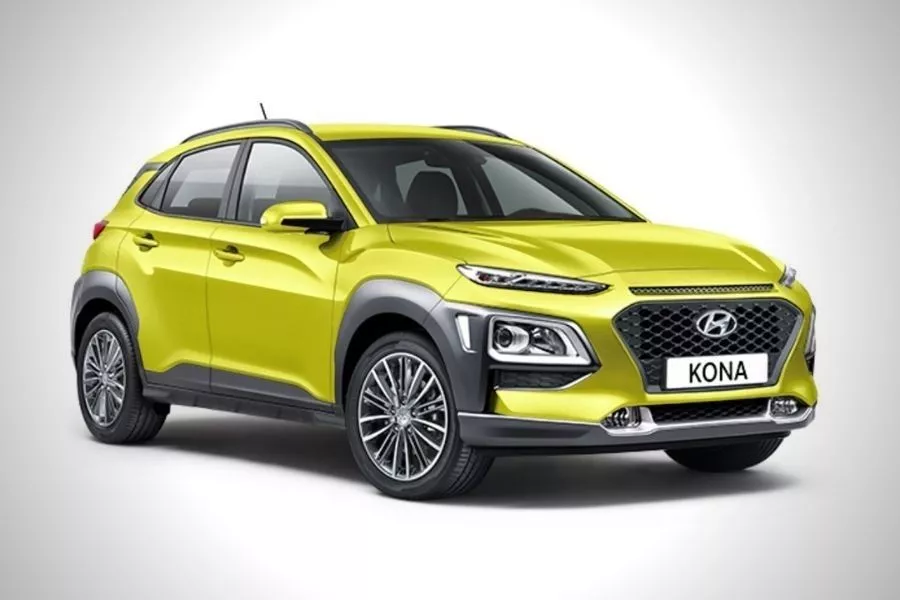
The Kona has a moderately futuristic-looking exterior design
Inside, the Hyundai-made model features fabric seats, a steering wheel with tilt and telescopic adjustment, a manual air-conditioning system (AC), a push-to-start button, and cruise control, as well as a monochromatic LCD Radio with MP3 player that’s linked to a six-piece speaker system.
Safety is handled by six airbags, stability control, traction control, anti-lock braking, and ISOFIX child seat tethers. It also has a tire-pressure monitor and speed-sensing door locks.
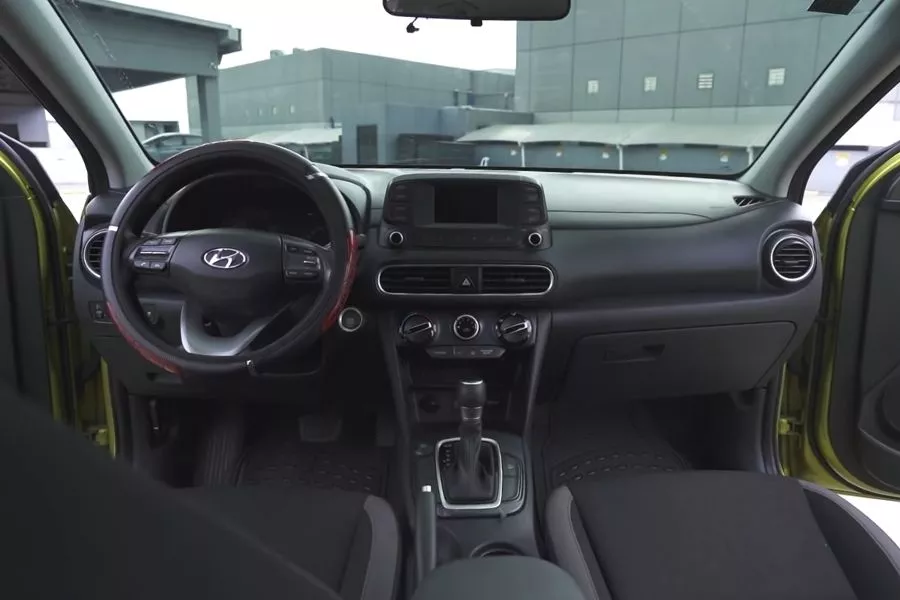
Inside the Kona
Under the hood, the Kona GLS uses a 2.0-liter inline-4 gasoline engine that’s capable of making up to 147 horsepower and 179 Nm of torque. Power is then sent to its rear wheels via a six-speed automatic torque converter transmission.
As mentioned, the Philippines currently only has one variant for this Hyundai crossover. It's called the Kona GLS 2.0 AT, and it has a price tag of Php 1,188,000.
Hyundai Kona vs Ford EcoSport
Inhabiting the subcompact crossover market way before most of its current rivals is the Ford EcoSport. While it visually appears smaller than the Hyundai, it is actually longer at 4,325mm long. Then again, it is a bit narrower with its 1,765mm width, but at the same time a bit taller with its 1,656mm height. As for its wheelbase though, it is shorter at 2,519mm. It does have more in the way of ground clearance at 209mm.
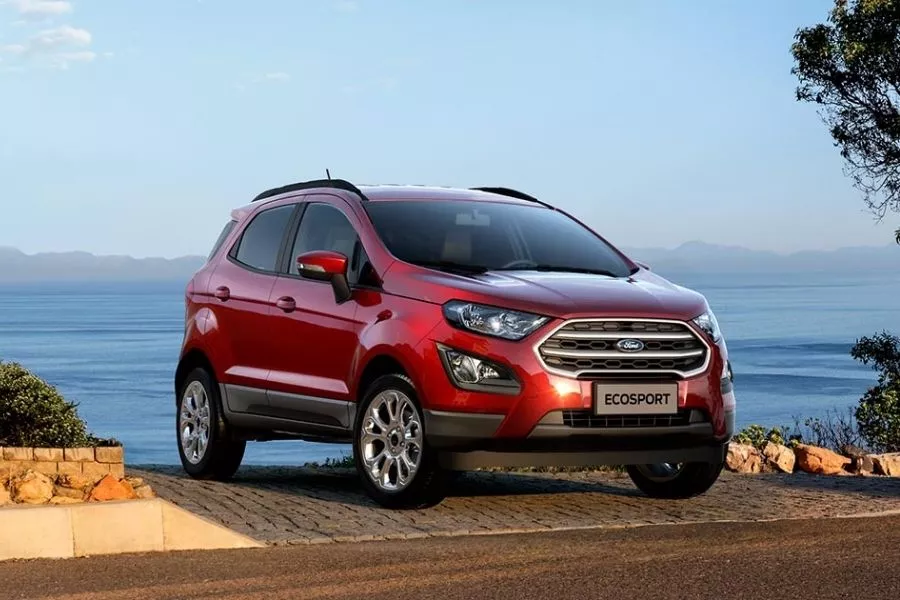
The compact and cute Ford EcoSport
As for exterior equipment, most of the EcoSport’s variants come standard with halogen headlamps, front fog lamps, and LED taillights. However, the top-spec model comes with high-intensity discharge (HID) projector headlamps with auto levelling, along with rain-sensing wipers.
When comparing the Ford EcoSport vs the Hyundai Kona in terms of passenger and driver amenities, the former’s top-spec EcoBoost Titanium variant gets more. To be specific, it has an eight-inch touchscreen with smartphone linking software, Bluetooth connectivity, and satellite navigation. Moreover, it comes standard with a tilt-and-telescopic steering wheel, automatic AC, leather seats, and an auto-dimming rear-view mirror.
The two high-spec Kona trims also have a more comprehensive safety kit. Both the EcoBoost Titanium and the Titanium 1.5-liter are equipped with hill-start assist, hill descent control, and a rear camera. Like the Kona though, it also has anti-lock braking, stability control, traction control, and six airbags. However, the EcoSport lacks the tire pressure monitoring system that’s available on the Kona.
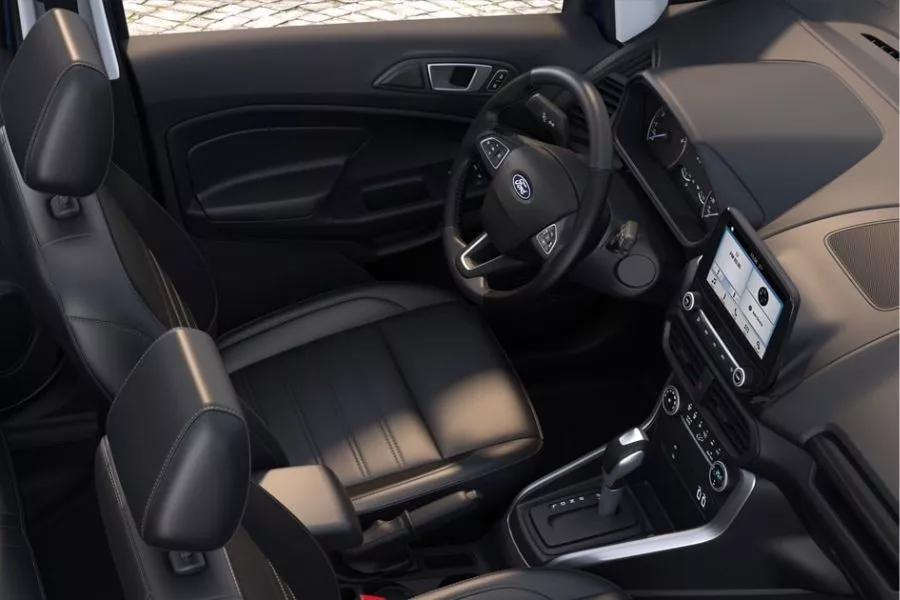
It's not the best in terms of interior space, but everything looks well-arranged
Unlike the Hyundai model, the Ford EcoSport for the Philippine market gets two engine options. The more powerful one is the 1.0-liter EcoBoost gasoline mill, which can make up to 122 horsepower and 170 Nm of torque. The other one is a naturally-aspirated 1.5-liter gasoline engine producing 120 horsepower and 150 Nm of torque. Both engines are paired with a six-speed automatic transmission. The entry-level EcoSport 1.5-liter Trend however, uses a 5-speed manual gearbox.
At the moment, the EcoSport has four variants for the Philippine market, with prices ranging from Php 799,000 to Php 1,190,000.
Hyundai Kona vs Kia Seltos
Also going against the Kona in the subcompact crossover market is the Kia Seltos. And size-wise, it is a bit longer than its Hyundai rival at 4,370mm. As for width though, the Kia crossover is just as wide as the Kona at 1,800mm, yet the Seltos stands taller at 1,615mm if you include the roof rails.

The Kia Seltos
Regarding exterior equipment, the Seltos variants within the same price range as the Kona GLS come standard with halogen projector headlamps, LED taillights, and front fog lamps. The top-spec model, however, does get automatic LED headlamps.
If we pitted the Hyundai Kona vs the Kia Seltos in the realm of interior features, then the Kia-made model offers more. The top-spec variant gets automatic air-conditioning, and all Seltos variants are kitted out with an eight-inch touchscreen with Apple CarPlay, Android Auto, USB, and Bluetooth connectivity. Just like the Kona though, it also has a tilt and telescopic steering wheel, a six-piece speaker system, cruise control, and a push-to-start button.
The higher-spec Seltos also gets six airbags just like the Kona, along with anti-lock brakes, stability control, ISOFIX, and other safety features. Then again, the Kia comes with hill-start assist and hill descent control, which the Kona lacks.
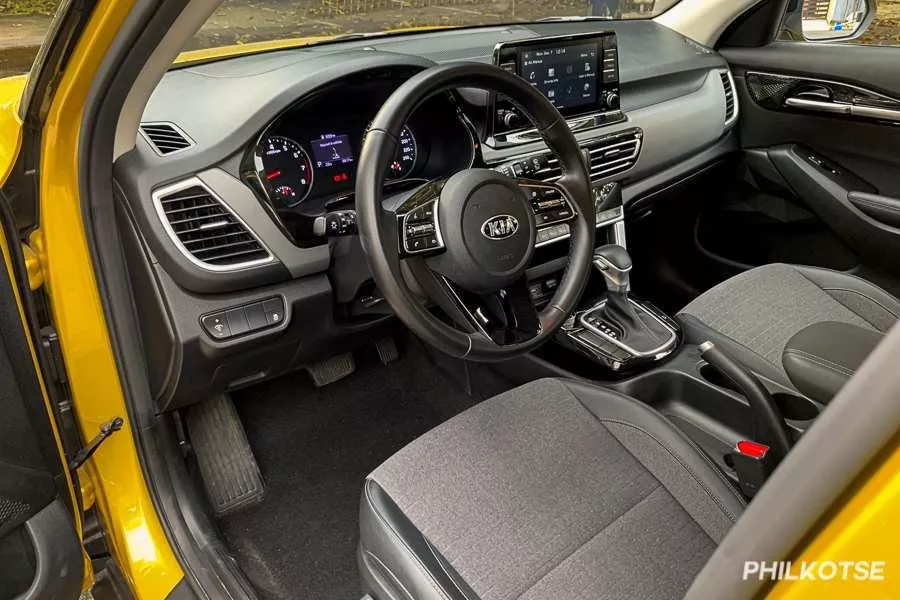
A peek into the Seltos' front cabin
Under the hood, the Seltos for the Philippine market is powered by a 2.0-liter inline-4 gasoline engine. As most, it can produce up to 146 horsepower and 179 Nm of torque. The engine is then paired with an intelligent variable transmission, which is a more advanced form of CVT. As for power though, the Seltos just about produces as much oomph as the Kona.
Currently, the price for the Seltos’ three variants ranges from Php 1,098,000 to Php 1,505,000.
Hyundai Kona vs Geely Coolray
The last rival on this list is the Geely Coolray, which was introduced to the country much later than the EcoSport and the Kona, but a bit earlier than the newer Seltos.
Size-wise, the Coolray is 4,330mm long, 1,795mm wide, and 1,609mm in height. Its wheelbase is 2,600mm long, and it has a ground clearance of 196mm. That said, it is significantly longer than the Hyundai model. However, the Coolray is a bit narrower and taller at the same time. It’s wheelbase is identical to the Kona’s, but it has a slightly lower ground clearance.
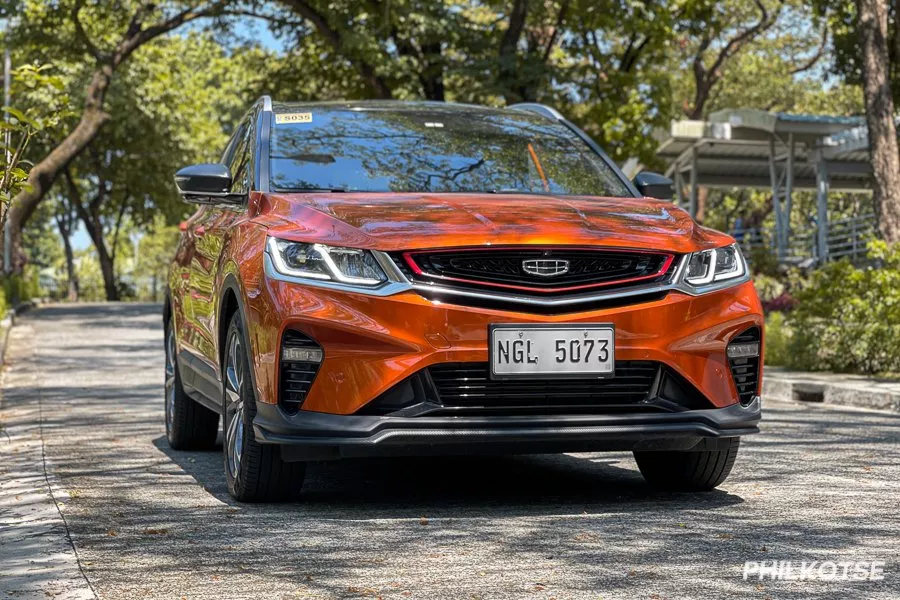
The Geely Coolray is a certified head-turner
As for exterior equipment, the entry-level Coolray variants are similar to the Kona in that they also have halogen headlamps, front fog lamps, and LED taillights. The top-spec model however does get LED headlamps with auto function.
Inside, the Coolray gets a better head unit in the form of a 10-inch touchscreen with smart phone linking software. Just like the Hyundai crossover though, the Geely model also gets cruise control and a push-to-start button. However, it also has leather-clad seats, along with being one of the few models in this segment featuring a panoramic sunroof.
Safety-wise, this is where the Coolray clearly beats the Kona and other subcompact crossovers. That’s because it is also one of the few crossovers within this specific segment and price range that comes with a fully automatic parking assist system. This is available on the top-spec Coolray Sport, and it allows the said car to literally park itself.
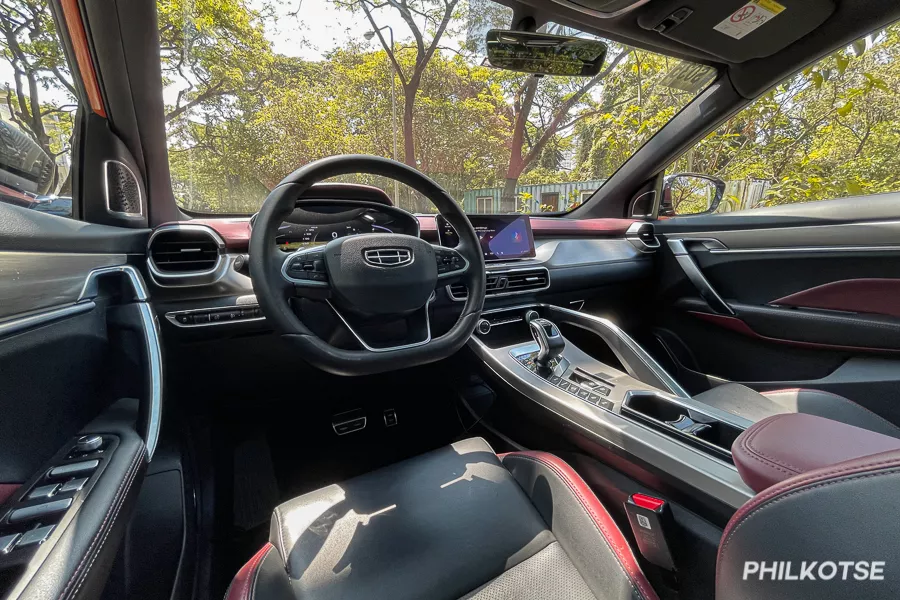
The Coolray's cockpit
Other than that, the Coolray also comes standard with the usual anti-lock braking, stability and traction control, as well as ISOFIX. Just like most of its rivals including the Kona, it also has six airbags. It does, however, have speed-sensing door locks and a tire pressure monitor, which the Hyundai lacks.
Currently, the Geely Coolray has three variants in the Philippine market. Their prices range from Php 978,000 to Php 1,198,000.
For more car buying and selling guides, keep reading here on Philkotse.com.
Know more about Hyundai Kona 2026

The Hyundai Kona 2023 is a subcompact crossover brought in by the Korean marque. It is available in the Philippines in one variant only which is priced at Php 1,188,000. Powering this vehicle is a 2.0-liter NU MPI Atkinson gasoline engine capable of generating 147 horsepower and 179 Nm of torque. Only a 6-speed automatic transmission is used to drive the power from the engine to the front wheels exclusively.
In terms of dimensions, the Kona has a length of 4,165 mm, a width of 1,800 mm, and a height of 1,550 mm. Additionally, it comes with a wheelbase and ground clearance rated at 2,600 mm and 170 mm, respectively. In the local market, this Korean subcompact crossover goes up against the likes of the Mazda CX-3, Kia Seltos, and Geely Coolray.
Discontinued
ExploreRecent posts
- Latest Kia Seltos Price Philippines 2026 Sep 23, 2025
- Latest Geely Coolray Price Philippines 2026 Sep 23, 2025
- Latest Ford EcoSport Price Philippines 2026 Jan 07, 2023
- Hyundai Philippines price List 2026 Oct 08, 2020


